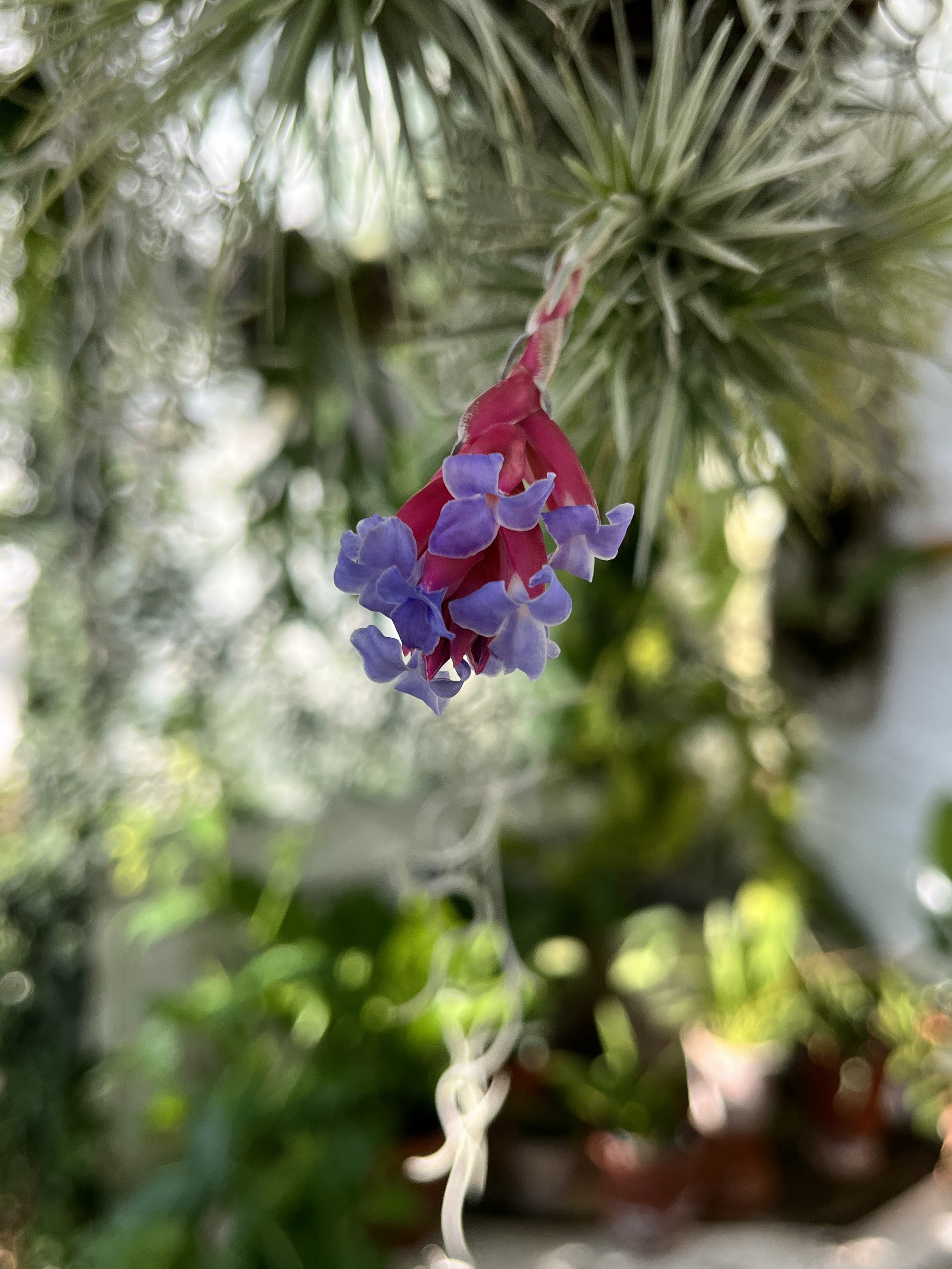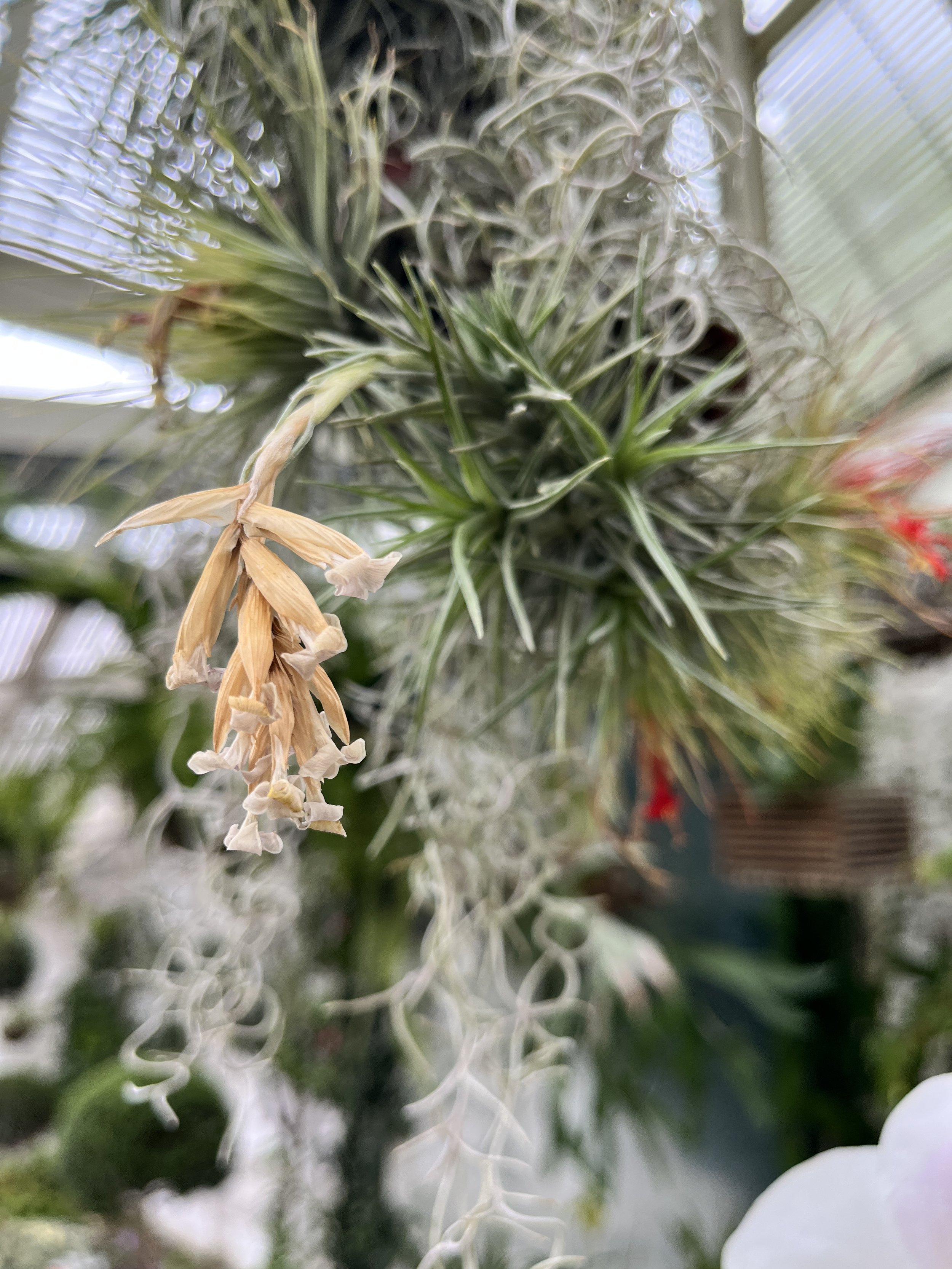Around the World in Flowers
OSGF
The western hemisphere is currently in the final stages of fall– trees in the landscape have reached dormancy and much of the garden has been tucked away for winter. On the other side of the globe, countries in the southern hemisphere are awaiting the arrival of summer and with it a beautiful array of flowers. Read on to take a botanical tour through the plants of the Southern Hemisphere without ever having to set foot in an airport.
Brazil
Brazil is made up of many different biomes, from a long stretching coastline, to the tropical Amazonian forests and fire adapted savannahs. Making up approximately 3,286,470 square miles it’s no wonder these areas are home to a high degree of plant diversity and in turn plant exports. Popular plants we see in gardens throughout the US like petunias and bougainvillea all originate from Brazil as well as certain houseplants and orchids. Among one of the many species that has grown (no pun intended) into a trendy houseplant which can also be found in the formal glasshouse at Oak Spring is Tillandsia stricta or air plant.
Tillandsia is a hefty genus making up approximately 655 species which are distributed throughout South America, Central America and into the southern states of North America. As an epiphytic plant, their native habitat isn’t in the soil but rather up in the canopy layer clinging to the bark of trees or on cliff faces. Attaching their roots gives them stability, but air plants don’t take any nutrients from the trees. Instead they survive with the help of trichomes, tiny hairs that double as a way for the plants to take in nutrients and water while also preventing water loss.
These trichomes also contribute to the silvery color of the leaves which make them a striking addition to a houseplant collection. In the east wing of the formal glass house, conditions are humid and they are clustered in a hanging arrangement with other Tillandsia species but still receive good airflow which is important for their care.
Another epiphyte from the region is Billbergia nutans, named after Swedish amateur botanist Johan Billberg. Nearly 40 cultivars and hybrids are in cultivation.
Polynesia
When colonists sailed in search of ‘new’ continents, their navigations took them through many parts of the Pacific Ocean and what is presently Polynesia. The archipelago of Raiatea, Taha`a, Bora Bora, Huahine, Tupai and Maupiti were collectively dubbed Society Islands by Captain James Cook because, “they lay contiguous to one another.”
The small islands of the Pacific Ocean were formed over a chain of volcanic hotspots. Magma was brought up to the Earth’s surface and continued to build up until a land mass was formed and volcanic activity became dormant. Due to their isolation and geologic history, the diversity of flora of these islands is somewhat restricted in numbers but not in beauty.
Case in point: Crateva religiosa. This is a species that can be found not only in Polynesia but in tropical regions of Asia, and also curiously in Venezuela. In the Tahitian language, which makes up around 30 different languages, this plant is called pua veoveo meaning ‘flower of rank odor’.The robustly scented flowers are a soft yellow with long, showy purple filaments and the light gray bark and leaves have been documented as being used for medicinal purposes. In other parts of Asia this small tree is referred to as the sacred garlic pear, perhaps speaking to the ‘rank odor’. Another common name is sacred tree, which reflects the history of it being incorporated into temple gardens and entrances in India.
Australia
So far this list has included plants which can be seen in flower during the height of the growing season in the Southern hemisphere but our next plant is one that’s technically just finished flowering. Cochlospermum gillivraei is a small tree native to the Northwest territory of Australia. Instead of flowering during the months of November- April, Cochlospermum strategically blooms when the branches are bare.
Instead of bright yellow flowers, dark green fruits are now developing on small gray stems and will continue to mature and turn brown. Eventually, these brown capsules will split open to reveal tufts of cotton fiber, a somewhat similar process to our native milkweeds. This fluff is what gives Cochlospermum its common name, kapok. Kapok is derived from the Malay language and is applied to multiple different species in Australia and Asia. The Bininj and Mungguy people of the Kadaku area in northern Australia have also named this plant andjedj or mandjedj.
The flowers, which bloom from August to October, are harvested by the Aboriginal peoples and either cooked or eaten raw. Immature roots are also dug and cooked. As the green fruit begins to appear, the Bininj and Mungguy people look to the clinging green fruits as a signal that it’s time to collect fresh water and crocodile eggs, a traditional food eaten by Bininj and Mungguy. Tufts of cotton were historically used to decorate the body during dancing.
New Zealand
Our final destination brings us not too far to the country of New Zealand. The country is divided into two regions, the North Island and the South Island. The North Island has volcanic grasslands, swamps and is dominated by temperate forests, which are primarily composed of evergreen trees. One of those evergreens is Knightia excelsa. As a member of the protea family, it is one of only two species in New Zealand, the rest of the family distributions are seen mostly in South Africa and neighboring Australia.
The habit of Knightia excelsa is distinctly conical and sticks out among other less upright native trees. During spring, reddish flowers emerge and produce an abundance of nectar which attracts native bees and birds like the vibrantly colored bellbirds, hence its common name New Zealand honeysuckle. Another common name given by the Indigenous Māori people is rewarewa. Historically Māori have harvested the flowers and let the liquid accumulate into a carved gourd vessel. They also utilized the inner bark as a bandaging material for wounds.
Unless otherwise noted, botanical illustrations are from: Banks' florilegium : a publication in 34 parts of 738 copperplate engravings of plants collected on Captain James Cook's first voyage round the world in H.M.S. The copy X.
References:
Barton, I. (n.d.). Rewarewa. Tāne’s Tree Trust. https://www.tanestrees.org.nz/species-profiles/rewarewa/
Billbergia nutans, Queen’s tears, succulent,. San Marcos Growers Wholesale Nursery, Santa Barbara, California. (n.d.). https://www.smgrowers.com/products/plants/plantdisplay.asp?plant_id=254
Cochlospermum Gillivraei. Australian Native Plants Society (Australia). (2022, July 29). https://anpsa.org.au/plant_profiles/cochlospermum-gillivraei/
Crateva religiosa in global plants on JSTOR. (n.d.). https://plants.jstor.org/compilation/Crateva.religiosa
Kapok Bush. Australian Government, Parks Australia. (2023, November 27). https://parksaustralia.gov.au/kakadu/discover/nature/plants/kapok-bush/
'Knightia excelsa’. Trees and Shrubs Online (treesandshrubsonline.org/articles/knightia/knightia-excelsa/).
Olson, D. (n.d.). Society Islands Tropical Moist forests. One Earth. https://www.oneearth.org/ecoregions/society-islands-tropical-moist-forests/
Ross, J. (2019, November 26). Plant Ecology in Brazil. Journal of Ecology Blog. https://jecologyblog.com/2017/11/03/brazil-biodiverse-and-ready-to-explore/#:~:text=Brazil%20has%20six%20different%20types,%2C%20and%20Pantanal%20(wetlands)
Srinivas, V., Surendra, G., Anjana, M., Sai Kiran, A., Subba, D., & Swathi, V. (2018). A Scientific review on Crateva religiosa. International Journal of Advances in Pharmacy, Biology and Chemistry, 7(1).
University of Florida. Air Plant – Tillandsia. Air Plant - University of Florida, Institute of Food and Agricultural Sciences. https://gardeningsolutions.ifas.ufl.edu/plants/houseplants/air-plants.html#:~:text=These%20odd%2Dlooking%20plants%20have,unique%20displays%20in%20their%20homes
Violet Lawson and Barbara McKaige (2016) Ngurrungurrudjba (Yellow Water) Seasons, Kakadu National Park, Northern Territory, Australia. CSIRO (Land and Water)
Whistler, W. Arthur. “Annotated List of Tahitian Plant Names.” Allertonia, vol. 14, 2015, pp. 1–116. JSTOR,http://www.jstor.org/stable/26329014.








